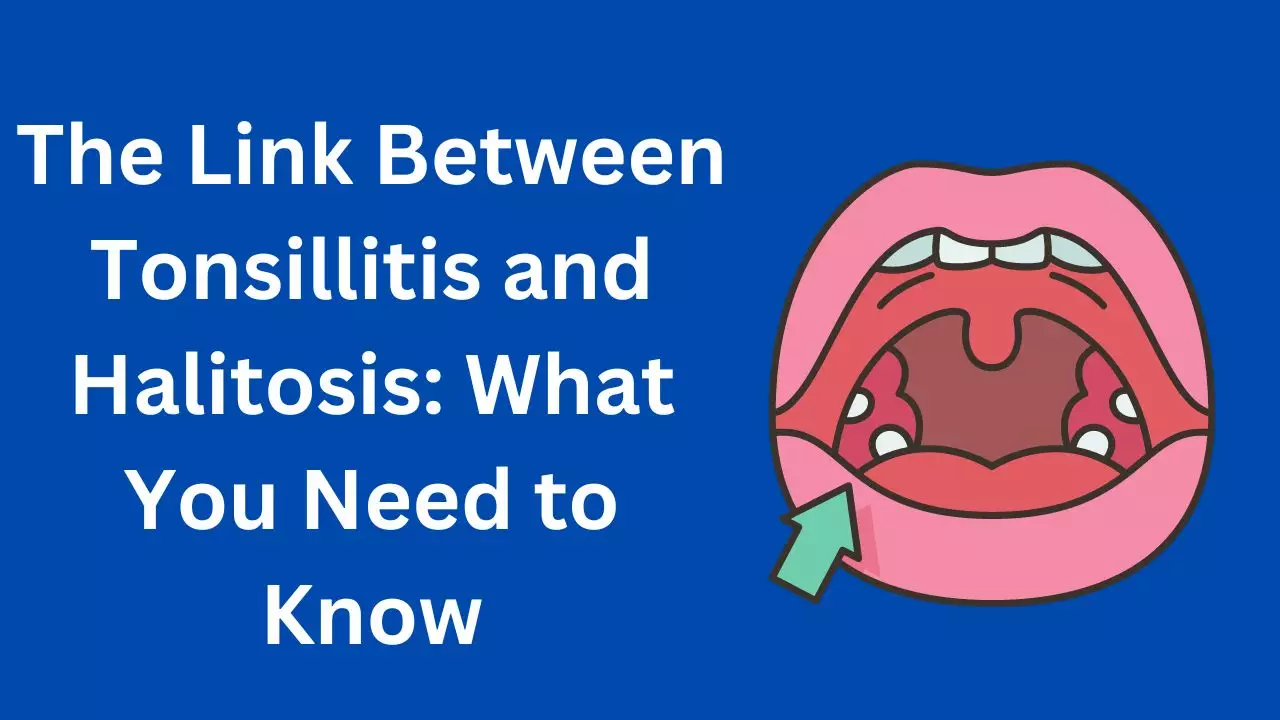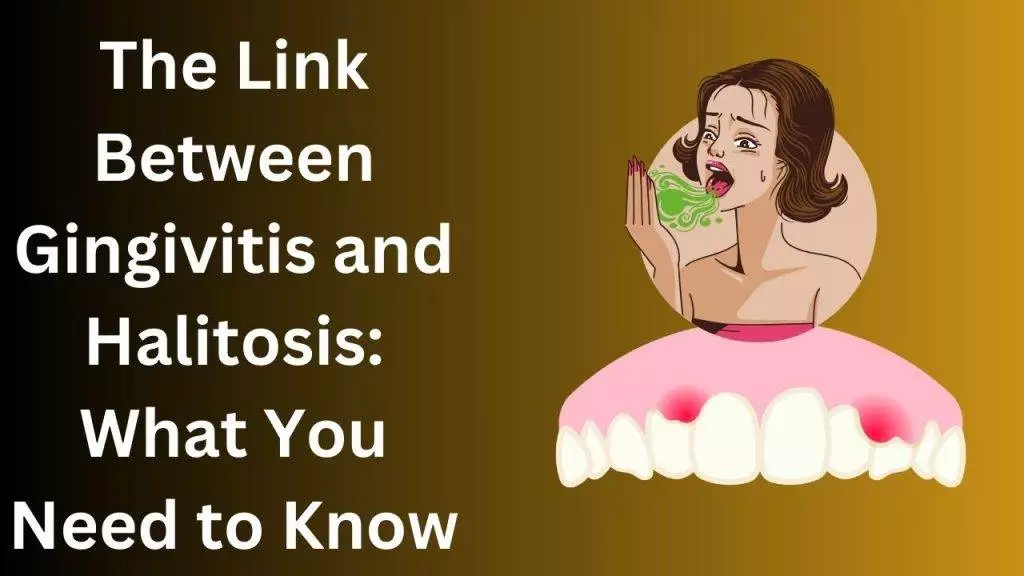
- What is tonsillitis and how does it affect your body?
- The causes and symptoms of halitosis (bad breath)
- The connection between tonsillitis and halitosis
- How does tonsillitis contribute to bad breath?
- The effects of bacterial growth in the mouth
- How to prevent tonsillitis and halitosis
- The importance of maintaining good oral hygiene
- Common treatments for tonsillitis and halitosis
- When to seek medical attention for tonsillitis and halitosis
- Living with tonsillitis and halitosis: Tips for managing symptoms and maintaining oral health
Tonsillitis and halitosis are two common conditions that can have a significant impact on a person’s health and well-being. Tonsillitis refers to the inflammation of the tonsils, which are located at the back of the throat. Halitosis, on the other hand, is the medical term for bad breath. While these two conditions may seem unrelated, there is actually a strong connection between them. Understanding this connection is important for both prevention and treatment.
What is tonsillitis and how does it affect your body?
Tonsillitis is a condition characterized by the inflammation of the tonsils, which are two small glands located at the back of the throat. The main function of the tonsils is to help fight off infections, but they can become infected themselves, leading to tonsillitis. This condition can be caused by both viral and bacterial infections.
The symptoms of tonsillitis can vary from person to person, but common signs include sore throat, difficulty swallowing, swollen tonsils, fever, and enlarged lymph nodes in the neck. Tonsillitis can also cause bad breath, which is often a result of bacterial growth in the mouth.
Tonsillitis affects the body by causing inflammation and swelling in the throat. This can make it difficult to eat and drink, leading to dehydration and weight loss. In severe cases, tonsillitis can also lead to complications such as abscess formation or difficulty breathing.
The causes and symptoms of halitosis (bad breath)
Halitosis, or bad breath, is a condition characterized by an unpleasant odor coming from the mouth. It can be caused by a variety of factors, including poor oral hygiene, certain foods and drinks, smoking, dry mouth, and underlying medical conditions such as gum disease or respiratory infections.
Common causes of bad breath include poor oral hygiene practices such as infrequent brushing or flossing, as well as not cleaning the tongue properly. Certain foods and drinks, such as garlic or coffee, can also contribute to bad breath. Smoking is another common cause of halitosis, as it can dry out the mouth and leave a lingering odor.
Symptoms of halitosis include a persistent bad taste or odor in the mouth, dry mouth, and a white or yellow coating on the tongue. In some cases, individuals with halitosis may also experience a metallic taste in their mouth or a burning sensation on the tongue.
The connection between tonsillitis and halitosis
There is a strong connection between tonsillitis and halitosis, as tonsillitis can often lead to bad breath. When the tonsils become infected, bacteria can multiply and thrive in the mouth, leading to an unpleasant odor. Additionally, the inflammation and swelling caused by tonsillitis can make it difficult to maintain good oral hygiene practices, further contributing to bad breath.
Both tonsillitis and halitosis are often caused by bacterial growth in the mouth. Bacteria naturally reside in the mouth, but when they are allowed to multiply unchecked, they can cause infections and produce foul-smelling compounds that result in bad breath.
How does tonsillitis contribute to bad breath?
Tonsillitis can contribute to bad breath in several ways. First, the inflammation and swelling of the tonsils can make it difficult to properly clean the mouth and remove bacteria. This allows bacteria to multiply and produce foul-smelling compounds that result in bad breath.
Secondly, tonsillitis can cause post-nasal drip, which is when excess mucus from the nose and sinuses drips down the back of the throat. This mucus can harbor bacteria and contribute to bad breath.
Lastly, tonsillitis can lead to the formation of tonsil stones, which are small calcified deposits that form in the crevices of the tonsils. These stones can harbor bacteria and produce a foul odor, contributing to bad breath.
The effects of bacterial growth in the mouth
Bacterial growth in the mouth can contribute to both tonsillitis and halitosis. When bacteria are allowed to multiply unchecked, they can cause infections in the tonsils, leading to tonsillitis. This can result in inflammation, swelling, and the production of foul-smelling compounds that contribute to bad breath.
Maintaining good oral hygiene is crucial for preventing bacterial growth in the mouth. This includes brushing and flossing regularly, cleaning the tongue, and using mouthwash to kill bacteria. It is also important to visit a dentist regularly for professional cleanings and check-ups.
How to prevent tonsillitis and halitosis
Preventing tonsillitis and halitosis involves practicing good oral hygiene and taking steps to reduce the risk of infection. Some tips for preventing tonsillitis include:
– Washing hands regularly to reduce the spread of germs
– Avoiding close contact with individuals who have respiratory infections
– Avoiding sharing utensils or drinking from the same glass as someone who is sick
– Getting vaccinated against common infections such as strep throat
To prevent halitosis, it is important to maintain good oral hygiene practices such as:
– Brushing teeth at least twice a day with fluoride toothpaste
– Flossing daily to remove plaque and food particles from between teeth
– Cleaning the tongue with a tongue scraper or toothbrush
– Using mouthwash to kill bacteria and freshen breath
– Drinking plenty of water to keep the mouth hydrated
In addition to good oral hygiene practices, maintaining a healthy diet can also help prevent both tonsillitis and halitosis. Eating a balanced diet that is rich in fruits, vegetables, and whole grains can help boost the immune system and reduce the risk of infections.
The importance of maintaining good oral hygiene
Maintaining good oral hygiene is crucial for preventing both tonsillitis and halitosis. Regular brushing and flossing help remove plaque and bacteria from the teeth and gums, reducing the risk of infection. Cleaning the tongue is also important, as bacteria can accumulate on its surface and contribute to bad breath.
Visiting a dentist regularly for professional cleanings and check-ups is also important for maintaining good oral hygiene. A dentist can remove plaque and tartar that cannot be removed by brushing alone, as well as identify any potential issues before they become more serious.
Common treatments for tonsillitis and halitosis
Treatments for tonsillitis depend on the underlying cause and severity of the infection. In some cases, tonsillitis may resolve on its own with rest, fluids, and over-the-counter pain relievers. However, if the infection is bacterial in nature, antibiotics may be prescribed to help clear the infection.
For individuals with chronic or recurrent tonsillitis, a tonsillectomy may be recommended. This surgical procedure involves removing the tonsils to prevent future infections.
Treatment for halitosis depends on the underlying cause. If poor oral hygiene is to blame, improving oral hygiene practices can help alleviate bad breath. This includes brushing and flossing regularly, cleaning the tongue, and using mouthwash.
If an underlying medical condition is causing halitosis, such as gum disease or dry mouth, treating the underlying condition can help alleviate bad breath. This may involve professional dental cleanings, medication, or lifestyle changes.
When to seek medical attention for tonsillitis and halitosis
In most cases, tonsillitis and halitosis can be managed at home with self-care measures. However, there are certain signs that indicate it is time to seek medical attention.
For tonsillitis, it is important to seek medical attention if:
– Symptoms do not improve within a few days
– Symptoms worsen or become severe
– Difficulty breathing or swallowing
– High fever or chills
– Pus or white spots on the tonsils
For halitosis, it is important to seek medical attention if:
– Bad breath persists despite improved oral hygiene practices
– Bad breath is accompanied by other symptoms such as a sore throat or cough
– Bad breath is accompanied by pain or swelling in the mouth
Prompt medical attention is important for both tonsillitis and halitosis to prevent complications and ensure proper treatment.
Living with tonsillitis and halitosis: Tips for managing symptoms and maintaining oral health
Living with tonsillitis and halitosis can be challenging, but there are steps that can be taken to manage symptoms and maintain oral health.
For individuals with tonsillitis, it is important to rest, drink plenty of fluids, and take over-the-counter pain relievers as needed. Gargling with warm saltwater can also help soothe a sore throat. Avoiding irritants such as smoking or exposure to secondhand smoke can also help alleviate symptoms.
For individuals with halitosis, practicing good oral hygiene is crucial. This includes brushing and flossing regularly, cleaning the tongue, and using mouthwash. Drinking plenty of water can also help keep the mouth hydrated and reduce the risk of bad breath.
In conclusion, there is a strong connection between tonsillitis and halitosis. Tonsillitis can contribute to bad breath by causing inflammation and swelling in the throat, making it difficult to maintain good oral hygiene practices. Bacterial growth in the mouth can also contribute to both tonsillitis and halitosis.
Prevention and treatment for both tonsillitis and halitosis involve practicing good oral hygiene, maintaining a healthy diet, and seeking prompt medical attention when necessary. By understanding the connection between these two conditions and taking steps to prevent and treat them, individuals can improve their oral health and overall well-being.












